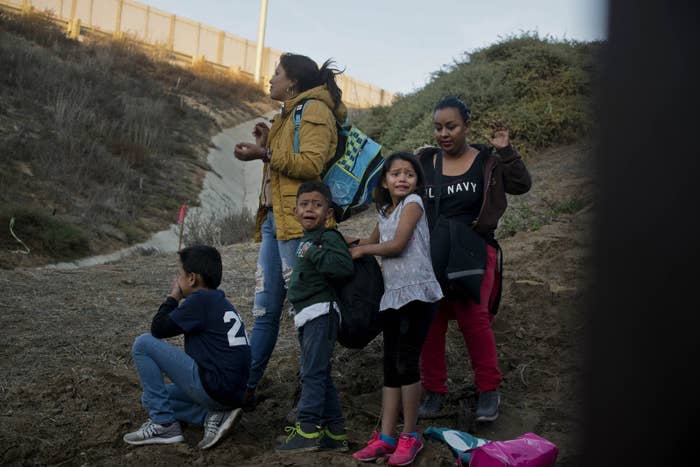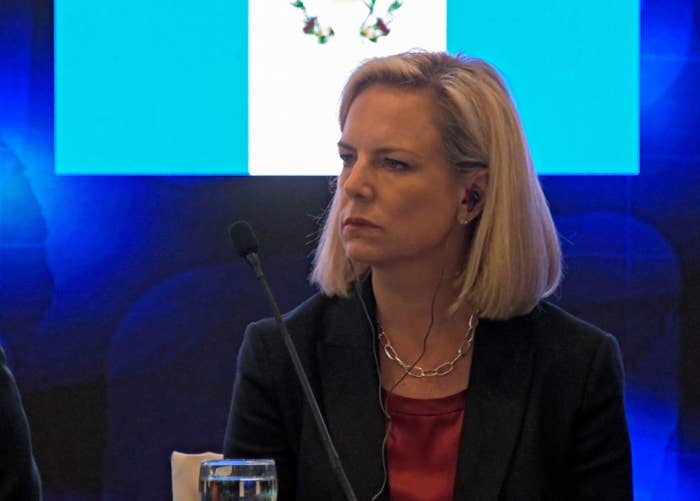
US border officials didn’t receive guidance from the Trump administration on how to implement its “zero tolerance” policy that led to separations of migrant families until after Department of Homeland Security Secretary Kirstjen Nielsen signed a memo enacting it, according to emails obtained by Democracy Forward through a Freedom of Information Act request.
The guidance was delivered May 4, 2018, nearly a month after then-attorney general Jeff Sessions announced that Justice Department prosecutors would charge all individuals who crossed the southern border without authorization under a zero tolerance policy.
Even then, the memo appeared to leave some room for confusion among officials, who said they would apply “common sense” until additional clarification and guidance was issued, according to the emails received by Democracy Forward and shared with BuzzFeed News.
To both former Department of Homeland Security officials and advocates, the timing of the guidance shows that US Customs and Border Protection authorities were unprepared for what soon became one of the most controversial policies enacted under the Trump administration — an intent to prosecute every individual who crossed the southern border without authorization — and eventually led to the separation of thousands of families.
“As with the travel ban, there was no run up and prep for it,” said Scott Shuchart, a former senior DHS adviser, referencing the administration’s lack of preparation and ensuing chaos over the policy that barred people from seven Muslim-majority countries.
Shuchart said DHS officials had long discussed implementing a zero tolerance policy, and even ran a pilot project in Texas in 2017. Sessions announced the agency’s intent to prosecute all individuals who crossed the border without authorization on April 6, 2018, and Nielsen signed a memo ordering authorities to refer those caught crossing the border illegally to prosecutors on May 4, 2018.
The guidance sent by email to leaders along the border was disseminated the same day.

“Given this was not something that came out of the blue, but was something that they were making vigorous efforts to put in place for a long time, why did they not make an effort to have it go smoothly?” said Shuchart. “It’s clumsy and consistent with the amateurish way they went about destroying people’s lives.”
Under the policy, immigrants caught crossing the border without authorization were referred to prosecutors who charged them with illegal entry. If these individuals were traveling with kids, they were separated while the adults faced the charges in federal court. The separated children were then sent to the custody of the Department of Health and Human Services and listed as unaccompanied minors.
John Sandweg, former head of US Immigration and Customs Enforcement and a DHS counselor under the Obama administration, said that such policy changes usually take weeks of preparation and planning before enforcement begins.
“The takeaway is that there was no planning or prep for this,” Sandweg said. “The Border Patrol was not adequately prepared...you can’t roll this out without engaging in extensive planning. At the end of the day, kids are involved and it’s all that more important everything is coordinated.”
CBP officials did not comment on the emails obtained by Democracy Forward.
Theresa Brown, a former CBP adviser who now heads immigration policy at the Bipartisan Policy Center, said that the emails indicate officials were confused even with the initial guidance that had been issued.
“This guidance did not provide the full clarification,” she said. “Why did it take so long to get this guidance and was there anything additional?”
The communications also show border officials were intent on documenting the immigration cases that were declined for prosecution. In emails, officials claim that such tallying was necessary because they needed to show how their efforts were leading to “100 percent” prosecution and the need for additional resources, like detention space.
To advocates like Ben Seel, a legal analyst at Democracy Forward, such intense planning stands in stark opposition to efforts to track where children and parents were sent after being separated at the southern border. CBP officials have said that they implemented a process to record separations in April 2018.
“These emails drive home exactly what their priorities were and where they would spend their energy,” Seel said.
Sandweg, the former DHS counselor, said that the tallying of prosecutions mentioned in the emails appears to be haphazard, but the omission of tracking children’s whereabouts was even more alarming.
“There is no mention of children or trying to build in place inter-agency systems to track the location of children and parents,” he said. “Those are things that are most concerning.”

